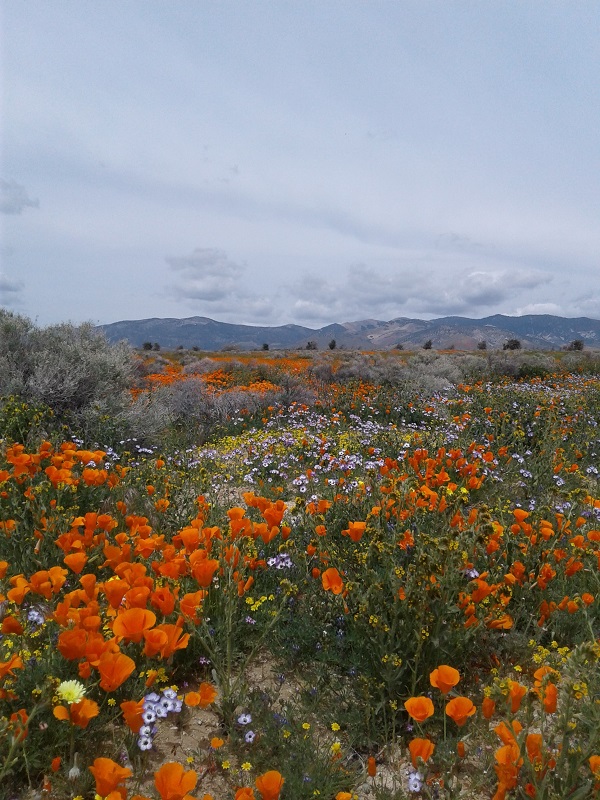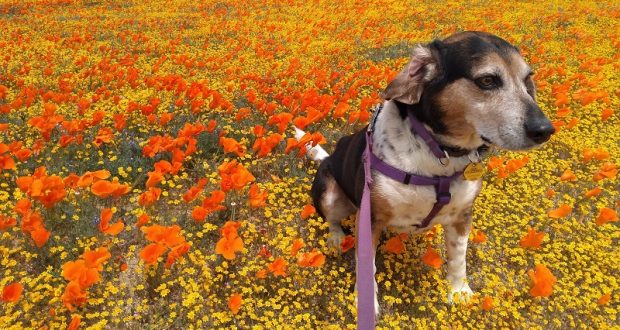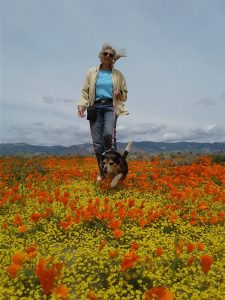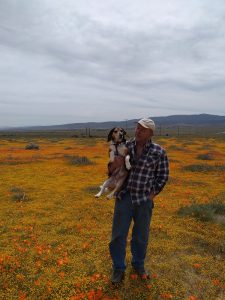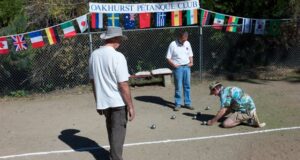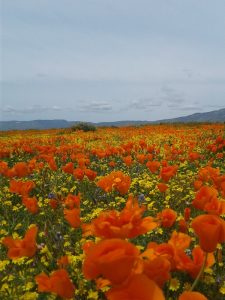 Puppies and poppies, both being an entirely worthwhile addiction, we loaded the former in the car and set off to see the latter.
Puppies and poppies, both being an entirely worthwhile addiction, we loaded the former in the car and set off to see the latter.
We had been told that the bloom was like nothing we’d ever seen before. But there were billions of things we’d never seen before and so we couldn’t help but wonder which one it would turn out to be!
Antelope Valley lies about four hours south of Oakhurst via Highways 41, 99, 5 and 138. Not really a valley but the eastern tip of the high Mojave Desert, bounded by the Tehachapi Mountains on the north and the San Gabriels on the south.
It was named for the once-abundant herds of Pronghorn Antelope that existed there until the 1880s when a variety of factors, including their reluctance to cross the new railroads tracks to reach their summer feeding grounds, led to near disappearance from the area. But that was then.
These days, whilst Palmdale and Lancaster to the east are home to a thriving aerospace industry and the desert there is increasingly festooned with solar arrays and windmills, the western Antelope Valley remains largely an open plain.
In the springtime the ephemeral bloom of orange, yellow and blue spills down from the Tehachapis to wash across the valley floor, only to break up against the San Gabriels and then fold back on itself and suddenly vanish for another year.
This is what the European settlers saw, and the Spanish Missionaries before them and the and the Americans Indians before them, and the Pronghorns before them, and the Woolly Mammoth before them. And we wanted to see it too.
From Bakersfield you head up the Grapevine Grade and then, shortly past Gorman, take 138 east into the valley. We were originally headed for the Antelope Valley Poppy Reserve, a state park about 14 miles west of Lancaster. But immediately upon entering the area our attention was drawn to the colors on the hillsides to the north and so we headed that-a-way on a promising looking dirt road.
It wasn’t more than a mile before we entered the bloom where we spent the better part of the afternoon taking hundreds of photos with our inexpensive phone cameras. We took about 300 shots and then culled out the bad ones which left us with about 290.
This was one of those days where it required considerable effort to actually take a bad picture. The images presented here, although artificial-looking, are completely raw and unaltered or enhanced in any way. Careful attention to the GPS tracking feature on modern phones provides for fairly easy navigation along a myriad of tracks and through a Joshua Tree forest in full bloom.
A 4-wheel drive is unnecessary. Go there if you can. And soon. It’s like nothing you’ve ever seen before.
Photos courtesy of Bob Kaspar
